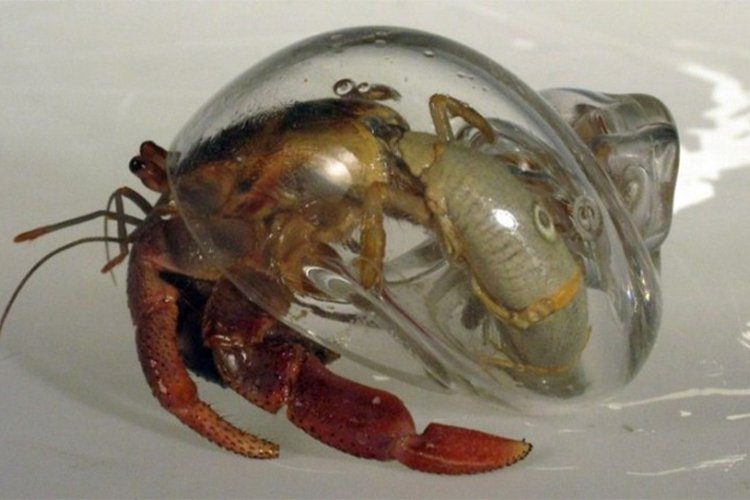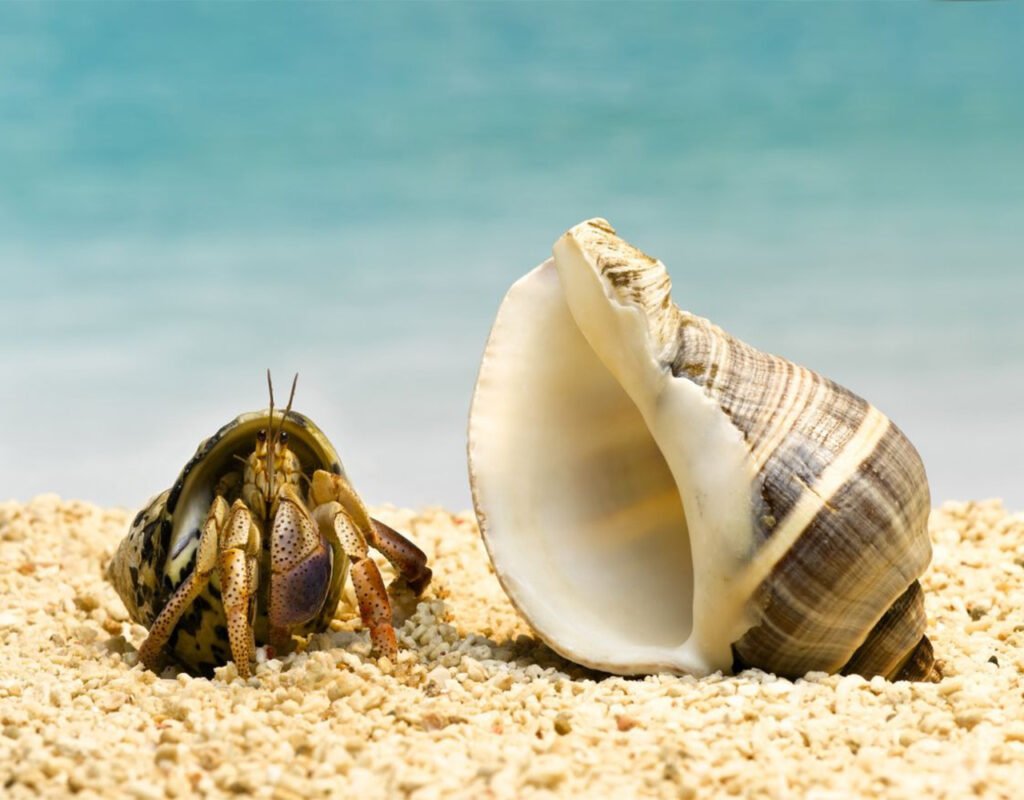Shell emptying is not necessarily an indication that there is something wrong with your hermit crab. These popular pet crabs regularly leave their shells as they grow and move to larger shells. However, stressful situations can cause premature shell emptying, and a homeless crab is an unhappy crab. Without a shell, a hermit crab is more vulnerable to the outside environment; its exoskeleton becomes too dry and the crab becomes lethargic. Crab owners can help their pets find a new home before their health declines.
What is shell emptying?
Shell emptying occurs when a growing crab needs to “swap out” both its home and its exoskeleton to accommodate its larger body size. This is a normal process called molting and is nothing to worry about. But not all crabs that leave their shells are molting. Stress, an inhospitable environment, an ill-fitting shell (too big, too small, too heavy), fungal infection, or uninvited company can all cause a hermit crab to leave its shell. When this happens, the homeless crab is suddenly exposed to its environment, which is bad for its health.
Shell Evacuation Symptoms in Hermit Crabs
When your crab is molting, you may notice it looking pale, gorging itself on food, trying to climb up the glass walls of its habitat, or staying close to its water source. These are pre-molting behaviors. If you notice any of these signs and your crab’s environment is clean and not overcrowded, watch to see if your crab sheds its shell and exoskeleton within a few days.

If your crab is not molting but is leaving its shell, there may be a problem due to an unsuitable environment or stress from overcrowding. If this happens, you may notice the following symptoms of stress:
The symptoms of stress-induced shell shedding are different from those of molting because they indicate poor health or an identifiable problem (such as fungal growth in the crab’s abandoned shell). These symptoms may not be immediately apparent during shedding, so observe your crab closely for a few days to determine the cause of the shedding and the need for intervention.
Causes of Shell Loss
Stress-related shell loss can have several causes, including:
Stress from transport or handling
Humidity in the habitat that is too low or too high
Temperature in the habitat that is too high
Fighting with other crabs
Fungal growth inside the shell (crabs may hide food scraps that will mold, or high humidity can encourage fungal growth)
Bacterial infection
Foreign material (such as sand) inside the shell
Mites inside the shell1
Diagnosing Shell Loss in Hermit Crabs
There is no official diagnostic procedure or testing to determine the cause of shell loss, but observing your crab and evaluating its molting stage and habitat conditions will help you figure out what is going on with your homeless hermit crab.
Treatment
When a hermit crab is out of its shell, it is stressed and vulnerable. Your crab needs protection from the other crabs in the habitat, as well as a little coaxing to get it to return to its shell.
Protect your hermit crab by placing it in an isolation tank or by sectioning off part of its habitat. The isolation area should have food, water, and about 6 inches of substrate for your crab to burrow into and complete its molt if necessary. The molting cycle can last up to a month.

A selection of empty shells, including several different sizes, should always be available in the habitat to facilitate transfer to a new hermit home.
Fungal or bacterial infections are usually self-limiting and will disappear after a molt.
Leave your crab alone in a dark habitat for a few days. The peace and quiet will eventually help it feel safe enough to try another shell.
Prognosis for Crabs with Shell Deflation
Evacuated hermit crabs do well if given the right environment, time and shell availability to find a new home. However, if a stressed crab does not receive attentive care to improve its environment, its health may decline and the crab could die.
How to Prevent Shell Deflation
You can prevent unwarranted shell deflation by carefully maintaining your crab and its habitat. To do this, make sure your hermit crab enclosure has an ideal humidity level (between 70 and 80 percent). Humidity is critical to the health of hermit crabs because moisture helps them breathe through their modified gills. A hygrometer will help you make sure your levels are within the target range. Also, mist your crab with warm distilled water several times a day to moisten the gills on the sides of its body.
The hermit crab habitat also requires a strictly regulated temperature range between 72 and 80 degrees Fahrenheit. Maintaining this temperature will allow the substrate in your aquarium to maintain a similar temperature gradient, keeping your crabs warm when burrowing.
To prevent fungal and bacterial infections, make sure your crab’s environment is properly ventilated, always feed them fresh food, and remove uneaten food before mold forms. Clean and maintain both the substrate and water regularly to prevent mold or algae growth.
Some crabs are very picky about the shape of the opening and the style of the shell, so try to provide slightly larger shells of the same style as their previous home. Before placing the new shells in the habitat, wash them and brush off any debris, sterilize them in boiling water for 15 to 20 minutes, dry them, and then make sure there are no foreign objects stuck in them. After cleaning the shells, spray them with a mixture of dechlorinated sea salt water and place them in the aquarium with your isolated crab.

